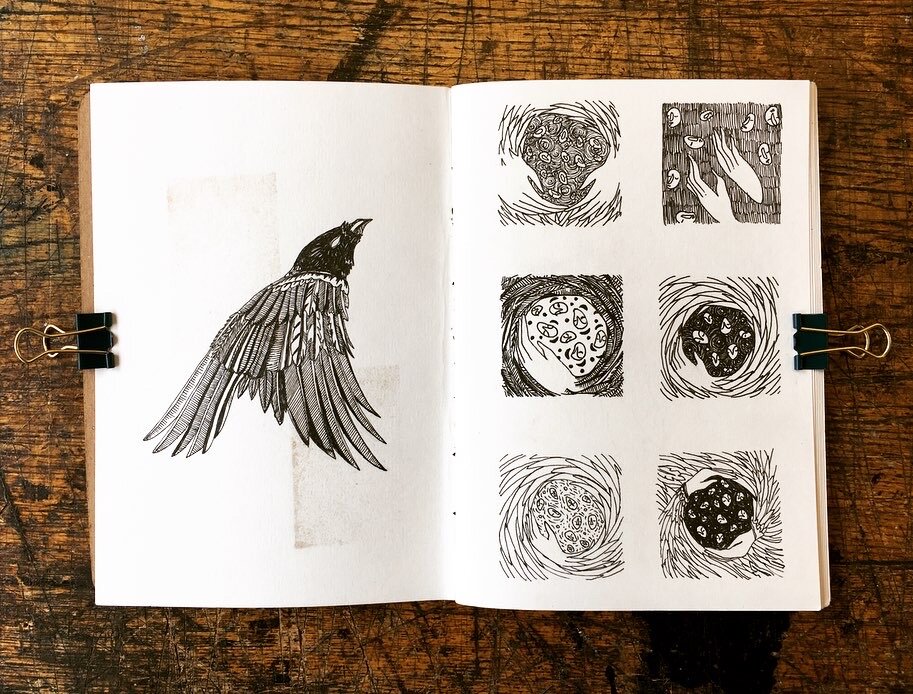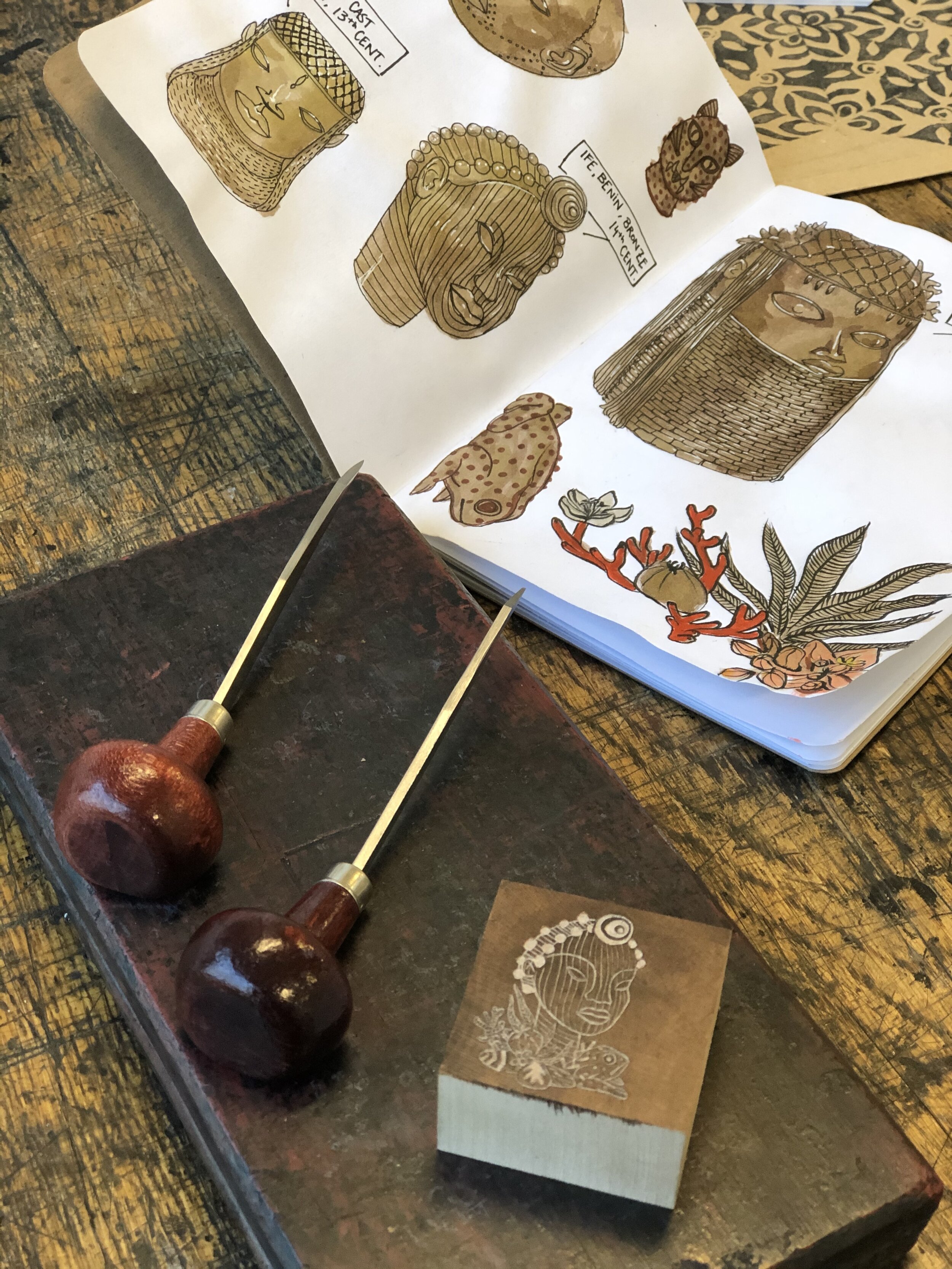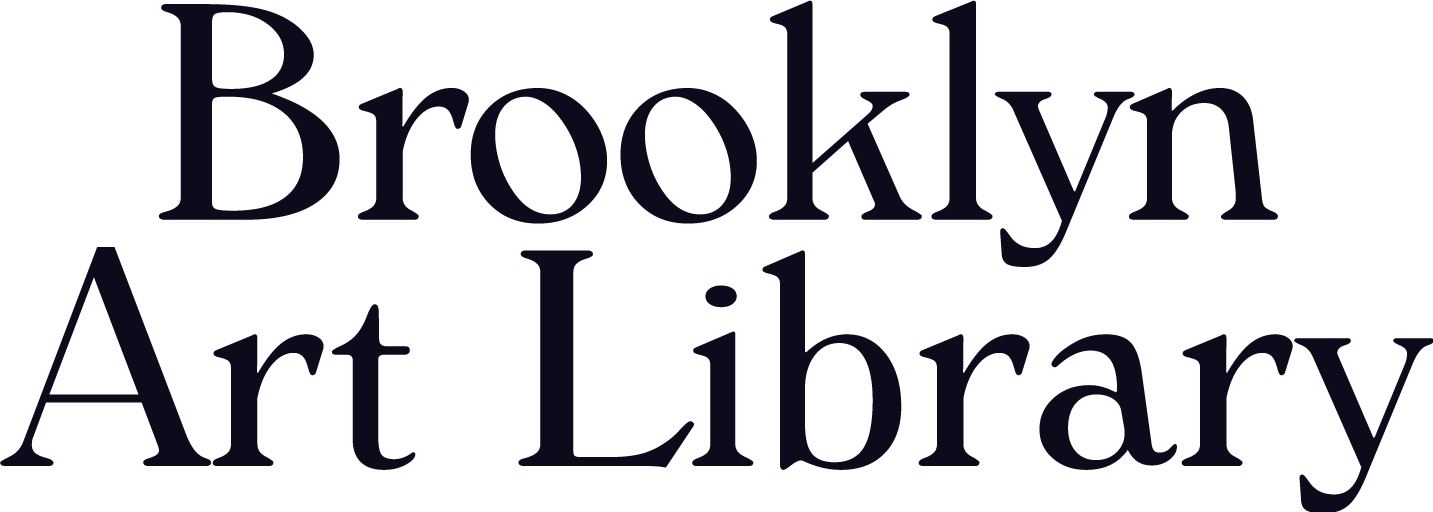Beyond the Page: Beatriz Leonardo
Beatriz Leonardo is a multimedia artist based in the UK who is currently working on a Volume 16 sketchbook. Working across illustration, printmaking and graphic design, Beatriz’s body of work references mythologies and histories from around the world and brings them together to show our collective humanity and relationship to the natural world. Read on below to learn more about Beatriz’s practice, where she finds inspiration, and her thoughts on how to be creative during this time.
Tell us about yourself!
I am a Portuguese multi-media artist residing in Bristol, UK. My practice ranges from illustration and printmaking, to motion and graphic design. I’m interested in the symbiosis between analogue and digital, figurative and conceptual, and the fine line that separates reality from imagination.
How were you first introduced to art? When did you begin printmaking?
Art has always been a part of my life, I remember creating drawn environments from the books I read inside shoeboxes, and illustrating the birds I saw outside in my diary. As I grew older, I started bringing a sketchbook with me everywhere. I would draw people on the train, sunflowers in the park, friends having semi-profound conversations at parties. Art was something that came naturally to me and eventually I became confident enough to share it with the world.
My printmaking journey started two years ago when I joined a Printmaking masters course and got to experiment with all kinds of different techniques. I tried serigraphy, etching, drypoint, enameling and lithography (amongst a few others). A lover of all crafts, I was drawn to the multidisciplinary nature of printmaking, but eventually realized that my heart lies with relief processes – in this case lino cutting and wood engraving.
Relief printmaking demands full concentration, the smallest slip will appear as a very obvious mark in the final print. For me it is a form of meditation and mindfulness. I enjoy the smell of the wood and the sound it makes as it is carved, the blade sliding through the linosheet, the design slowly appearing on the surface. It is as much about the process as it is about the final object. Relief allows you to create images with high contrast and minute detail, and it is always exciting to pull a print for the first time and reveal what you’ve spent hours crafting.
When did you participate in the sketchbook project? What was that process like for you?
My sketchbooks were the first platform I used to get serious about my practice, and they show my evolution through the years. They are some of my most prized possessions, acting as a visual diary to my thoughts, the places I’ve visited, the music I listen to – a time capsule of sorts.
When I discovered the Brooklyn Art Library I thought it was such a wonderful concept and I decided I wanted to be a part of the project, sharing a part of my soul with the world. Looking inside someone’s sketchbook can reveal a lot about the intricacies of their mind, and the fact that there is a place in the world where there is such a collection from all sorts of people from all walks of life is incredible.
I got my sketchbook in December and decided to use it as a diary for visual research and planning for my wood engraving based project – a Bestiary of Curious Creatures. Each spread represents a different creature and shows the various influences and studies I made before settling on a final design for each engraving. I wanted each spread to be different from the previous one, in the same way every creature that is illustrated is unique. I used collage, indian ink, biro pens, rubber stamping and watercolour, depending on which medium seemed appropriate at the time. It isn’t too obvious how the pages are connected apart from the recurring 4x4cm squares that can be seen on every spread with the different designs that I eventually traced into the wood to carve. Hopefully it can be appreciated as an object in itself, but it has been a vital part of my process, and acquires value when contextualized.





What finished forms do your prints usually take? Ie originals, editions, books, etc.
A final object is completely dependent on the subject matter and nature of the print. A lot of my prints are created as independent pieces, although they eventually fit into the whole of my practice. Some of my prints come as small numbered editions, others as monoprints in which I add an element of randomness, making them unique. They can all be considered originals due to the nature of printmaking and the specific characteristics that transfer through every hand pulled print.
I also really love creating artist books and the uniqueness that comes with this format. They are a chance to experiment with folding and binding, a way of experiencing a piece of art through a familiar object (the book). These often require a lot more planning and time to craft, but end up creating a very direct exchange between the artist and the viewer.
No matter what formats I use, it is important that I am present in every step of the planning and creation of my work, each print being crafted and printed from my hands into yours.
How does printmaking as a medium relate to the concepts in your work?
Mythologies are shared through word of mouth. They are the stories transferred to us by our grandparents, who, in turn, heard them from their grandparents. To an extent, every time a story is retold, it assumes the skeleton of its original while being a new version, unique to whoever is recounting it. Printmaking works in a similar way. An image is created, then repeatedly printed. However, each print is in itself an original, with unique qualities that vary slightly due to the nature of it being pulled individually.
It makes sense to explore stories through printmaking, the labour of love that goes into carefully crafting the perfect representation of the story that was once told with love to an attentive listener, then repeating it and sharing it with anyone who will hear or see.
Unlike a digital print, each printmaking print is an original in itself, imperfect in its humanity, but all the more special and charming for that exact same reason. It is an artistic process instead of an automated mechanical one, a beautiful marriage between human craft and tools. The stories I am retelling are the stories that shape cultures, and I mean to retain that human value in every print I carve.
What are sources of inspiration for you?
I draw inspiration from my dreams, my surroundings, music, conversations. My practice can be very personal and cathartic, shaped by my experiences, or my own interpretation of an existing story or subject. The most unexpected object or situation can blossom into an idea so I find it important to try to be attentive. The Greeks believed that inspiration struck when a muse would grace them with a beautiful idea. Sometimes the muses whisper in my ear, but when these aren’t around there are always ways to push inspiration. It can come from trying out a new medium, material, or style, reading a book or looking at work from artists that I love. Persistence and routine can result in creativity, and when I’m feeling less inspired I find that reading about some strange folklore or looking at local art from the other side of the world can encourage creation.
What themes and subjects interest you and how are they represented in your work?
I am interested in stories. The power of narrative, humanity’s escape and mirror. This means that a lot of my work is inspired by or directly represents mythology, folklore, religion, literature and allegories. Due to the supernatural essence of my subjects, the illustrations take on a somewhat surrealist approach, while maintaining figurative and symbolic elements, with a lot of references to the natural world.
These subjects are an endless source of material, which I have always been naturally drawn to, and that I feel are important to recognize and share with my audience. The stories we are told as children inform our morals and actions individually, and the stories humans have recounted throughout history shape our society and cultures.
When bringing together these tales from around the world, I quickly realized that there are a lot of similar motifs represented in completely different cultures. This comes to show that our worries, our traits, our relationships with each other and nature are common to us as a united human race, independent of borders.
I am also interested in feminism and the way that female characteristics are represented throughout cultures and history. I want my work to be a platform to collect and share stories about strong female characters, or even characters that have been mistreated and misjudged throughout history. It is in a way a celebration of womanhood, in all its intricate facets and with all the traits that make up a very beautiful and complex mosaic.
All of these themes come together through an exploration of the possibilities of narrative, using various mediums and formats. I am interested in the technical aspect of all these processes, and the symbiosis between digital and analogue techniques. I like to create physical objects and then transfer them into the digital realm, giving static images new life while maintaining the unique qualities that can only come through human interference.
What are you working on currently?
At the moment I am creating a body of work illustrating female mythological creatures from around the globe. “Curious Creatures” is the result of two years of research on folklore and mythology from every continent and experimentation with different mediums, such as indian ink, etching, and relief techniques.
The culmination of this research results in a collection of 26 wood engravings (one for each letter of the alphabet), creating an A to Z Bestiary. I was careful to include characters from as many different cultures as I found, having stories from every part of the globe, from the most known to the most obscure.
My aim was to celebrate the infinite facets of female personalities by illustrating and showcasing these creatures, in the hopes of demystifying some misconceptions about some of them and making my audience (and myself) learn about different cultures.
The wood engravings are carved onto 4x4cm square blocks, meaning that the detail is extremely precise and the process very meticulous. All of these engravings will then be gathered inside an artist book which will include a short text about what they represent written with a typewriter. The final phase of the project is scanning and editing the prints in order to animate them, bringing these creatures to life.
How have present circumstances impacted you creatively?
The first couple of weeks were quite stagnant creatively. I was too preoccupied with the state of the world to focus on doing anything creative. As time went by I became accustomed to this new way of living, as I feel we all are slowly readjusting to these new circumstances.
When the dust settled the creativity came back. I have been engaging in my main projects and commissions, but have also found the time to teach myself rotoscope animation, which I have obsessively been experimenting with every night after working.
One of the places I miss the most is the studio, its materials and machines. I’ve had to re-access my projects, focusing on what I can do in these circumstances instead of what I can’t, and adapt to this new reality. I’ve been working on my wood blocks but wasn’t able to see what they looked like printed, which can be very confusing and disheartening. I decided to buy the necessary materials online to create a makeshift studio in my home – a roller, letterpress ink, white spirit and a barren. I now can carve my blocks and immediately print them (a spoon to press can be your best friend in these situations!), making corrections as I go along.
Printing at home results in less perfect prints, with areas being less well pressed. However, I have come to embrace these mistakes and instead like the prints more for them - that is what makes a print unique and reiterates that it is printed by a human.
Do you have any advice for artists or people who want to be creative during this time?
Maybe it's time to try out a new craft! We now have time to experiment, so why not look around your house and transform that old cereal box into a monoprint? The internet has all the information you need to learn anything, so I recommend trying out some at home printmaking – rubber stamping, potato print, monoprint. Why not bind a notebook or stamp a postcard to send to a loved one?
Creativity is a wonderful outlet and a catalyst to happiness. I have used art as therapy and meditation through joyful and sorrowful times alike, and I am very grateful to have this outlet. Everyone is inherently creative and can benefit from engaging with that side, whether they explore it regularly or have it buried deep within.
But mostly, be kind to yourself and have fun. Appreciate the power of the blank page and the joy that comes with playing. There is no need to put pressure on yourself to excel or be extra productive, these can be tough times to be creative.
So go grab a pen, or splatter some coffee on a paper, pick up the guitar or go write down some odd thoughts - we all have creativity flowing in our veins, find your outlet and let it bring you happiness.
How can people support your art?
You can support me by buying my artwork on my online shop (https://www.beatrizleonardo.com/shop) or simply by following me on Instagram (@a.curious.creature) – a share or a comment can go a long way in making us little artists stuck in a room creating towards the void feel appreciated. I am also always looking for exciting collaborations and commissions, and if nothing else, please share with me your favourite mythological story! Who knows, I might end up illustrating it.











